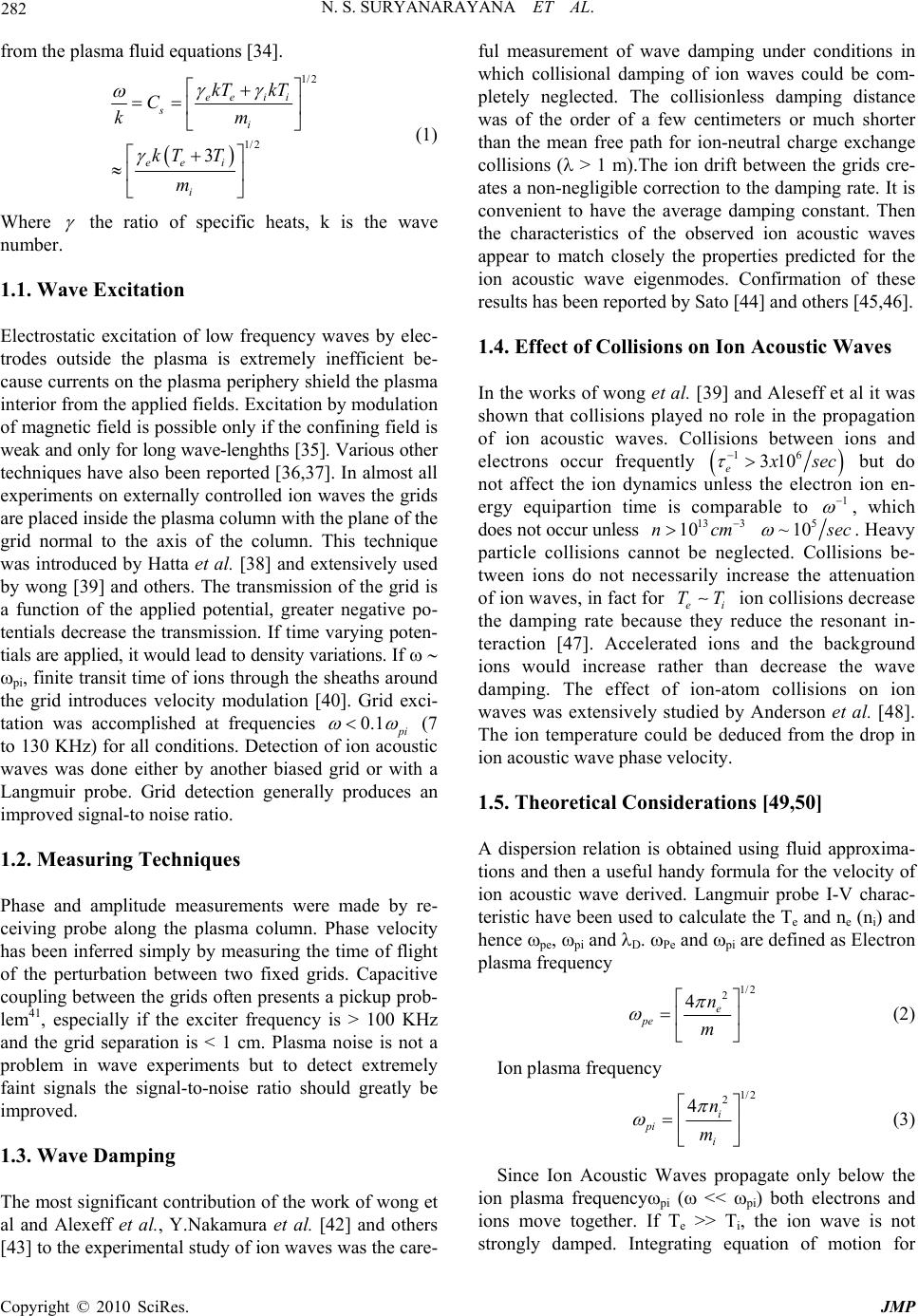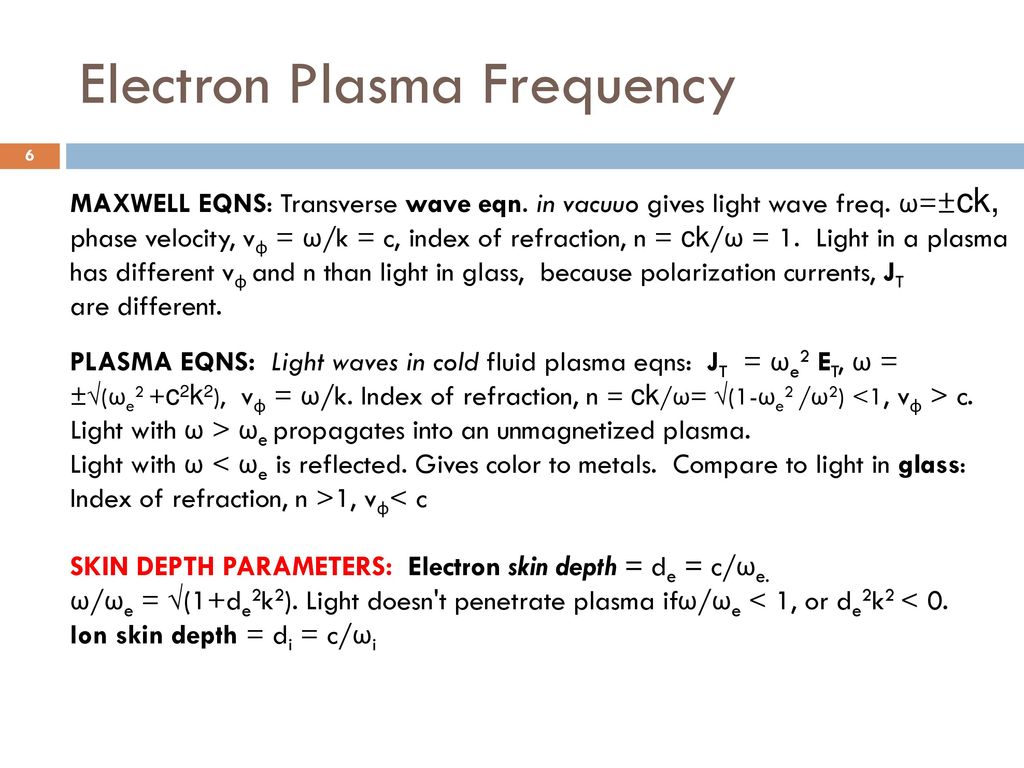Electromagnetic waves in plasma - ppt download
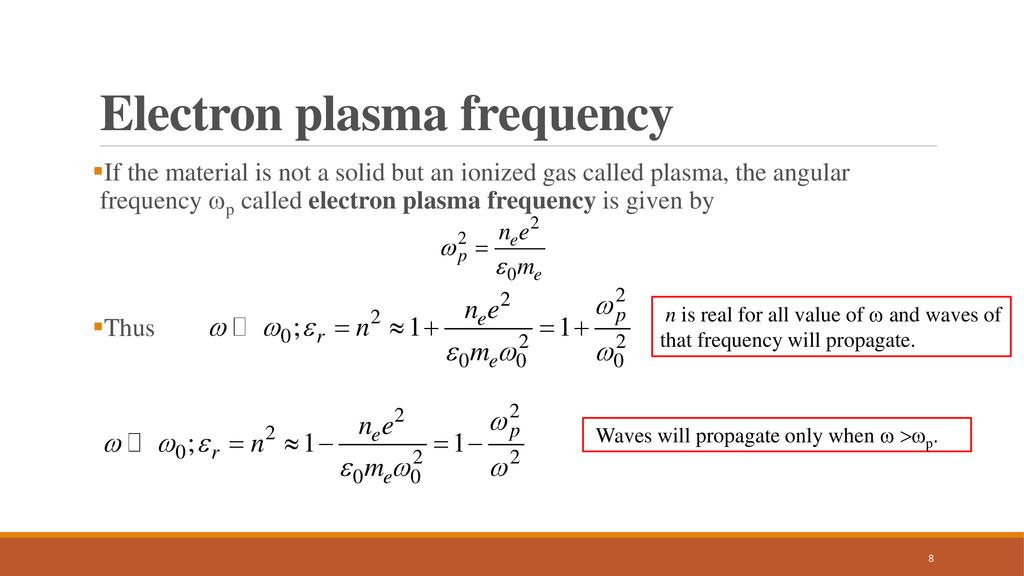
Electric dipole and polarization When the electron in a hydrogen atom bound to the nucleus moves a small distance from its equilibrium positon, the charge separation creates an electric field which acts as a linear restoring force and the resulting motion is simple harmonic with an angular frequency 0. Similarly, a steadily applied electric field also creates the charge separation between an electron and the rest of its atoms. This results in a polarization with a magnitude of P is known as the polarization or the density of electric dipole moments in a dielectric material. ne is the electron density, x is the displacement from equilibrium and 0 is the free space permittivity.
When the electron in a hydrogen atom bound to the nucleus moves a small distance from its equilibrium positon, the charge separation creates an electric field which acts as a linear restoring force and the resulting motion is simple harmonic with an angular frequency 0. Similarly, a steadily applied electric field also creates the charge separation between an electron and the rest of its atoms. This results in a polarization with a magnitude of. P is known as the polarization or the density of electric dipole moments in a dielectric material. ne is the electron density, x is the displacement from equilibrium and 0 is the free space permittivity.
The electric susceptibility indicates the degree of polarization of a dielectric material in response to an applied electric field. The susceptibility is the value of P per unit electric field. The permittivity of the dielectric is given by. The relative permittivity of dielectric constant is given by. A steady electric field E defines a static susceptibility which relates to the refractive index n by. The greater the electric susceptibility, the greater the ability of a material to polarize in response to the field, and thereby reduce the total electric field inside the material (and store energy). It is in this way that the electric susceptibility influences the electric permittivity of the material and thus influences many other phenomena in that medium, from the capacitance of capacitors to the speed of light.
To determine the dynamic susceptibility, let’s start analyzing the motion of bound undamped electric charge –e of mass m under the influence of an alternating electric field E = E0cos t. The equation of motion of the bound charge can be written as. Suppose a solution of the equation of motion is given as. It is found that and this gives. Therefore, the susceptibility for electron density can be written as. At the end of this slide, we have obtained the susceptibility of a bound charge without damping.
For a damped oscillatory bound charge, the damped oscillatory electron equation can be written as. The displacement is found to be. Similarly, the expression of for damped oscillatory electron density is given by.
The relative permittivity for damped oscillatory electron density. For. And. 0= harmonic frequency within the atom = (s/m)^1/2.
If the material is not a solid but an ionized gas called plasma, the angular frequency p called electron plasma frequency is given by. Thus. n is real for all value of and waves of that frequency will propagate. Waves will propagate only when p.
Consider. When , is negative. k may be written as i and this causes the incident EM waves on the plasma to be attenuated. For example, the amplitude of the electric field of wave is. reduced to . When the amplitude becomes , z = 1/ = known as the penetration depth.
The refractive index of the plasma is given as. If > p the electromagnetic wave propagates without attenuation within the plasma. Refractive index n is real for all value of and so is the dielectric constant r. This can also be seen from the propagation number k. The propagation wave number k is always real when > p .
Given that, in the ionosphere, the density of free electrons ne 1012 m-3, determine the plasma frequency The answer gives an intrinsic limit on the ability to do the radio astronomy from the Earth’s surface.. An electromagnetic wave propagation at w < wp is able to excite plasma oscillations in the plasma, thus draining energy out of the wave and into the motion of plasma particles. From the formula of the plasma frequency, the calculated frequency is found to be 9 MHz.
Radiation from the sun ionized the earth’s atmosphere between about 90 to 1000 km above the earth’s surface. Electrons are liberated from molecules and a space of free electrons and ions are created. Free electron density on the order of 1010 to 1012 electrons per cubic meter are produced by ionization from the sun’s rays. Electron density as a function of altitude, and various ionospheric layers.
From. This gives the dispersion relation of EM wave in plasma as. At high frequencies ( >> p ), the plasma dispersion relation approached the vacuum relation =ck. Also, the effective dielectric constant is 1. What does this mean Practically, this happens at VHF frequencies (30 – 300 MHz) and above. This means the waves simply pass the plasma without refraction. The waves just goes straight through the ionosphere to the outer space. Vhf : 30 – 300 MHz.
Regarding the dispersion relation of EM wave propagation in the plasma, The group velocity vg can be determined from d/dk. The group velocity is less than c at all frequencies > p .
The wave simply pass through the plasma without significant refraction. However, there can be an effect from the Earth’s magnetic field causing the medium to become anisotropic. Waves at these frequencies undergo Faraday rotation by the ionosphere. This means the polarization vector is rotated as the wave passes through the atmosphere. VHF : 30 – 300 MHz. HW (AM band) : – kHz (Europe) SW : 1.6 – 30 MHz. What happens to the propagations of HW and SW
Recall . When , the wavenumber becomes imaginary (j). In other words, the dielectric constant becomes negative and the propagation constant becomes imaginary. The electric field of the wave E=E0exp[j(kz-t)] becomes E=E0exp(-z)exp[jt] The wave will exponentially decay with distance according to exp(-z). The wave is NOT absorbed because the loss from electron collision has been ignored. This implies that the wave incident on the medium surface would be totally reflected. The waves have a cut off at = p . < p. An electromagnetic wave propagation at w < wp is able to excite plasma oscillations in the plasma, thus draining energy out of the wave and into the motion of plasma particles. From the formula of the plasma frequency, the calculated frequency is found to be 9 MHz.
When < p, the wave number becomes imaginary. This suggests that the EM waves incident on the plasma will be attenuated (without absorption) within the plasma. The penetration depth can be worked out when the amplitude of the transmitted wave becomes 1/e of the amplitude of the incident wave. The penetration depth = 1/ can be written as. This can be approximated as when << p . For the approximation, referring to the calculation on page 16, wp = 2pi(9MHz) = 56.5 x 10^6 rad/s. Delta = (3x10^8)/(56.6x10^6) = 5.3 m)
The major usefulness of the ionosphere is that the reflections enable wave propagation over a much larger distance than would be possible with line-of-sight.
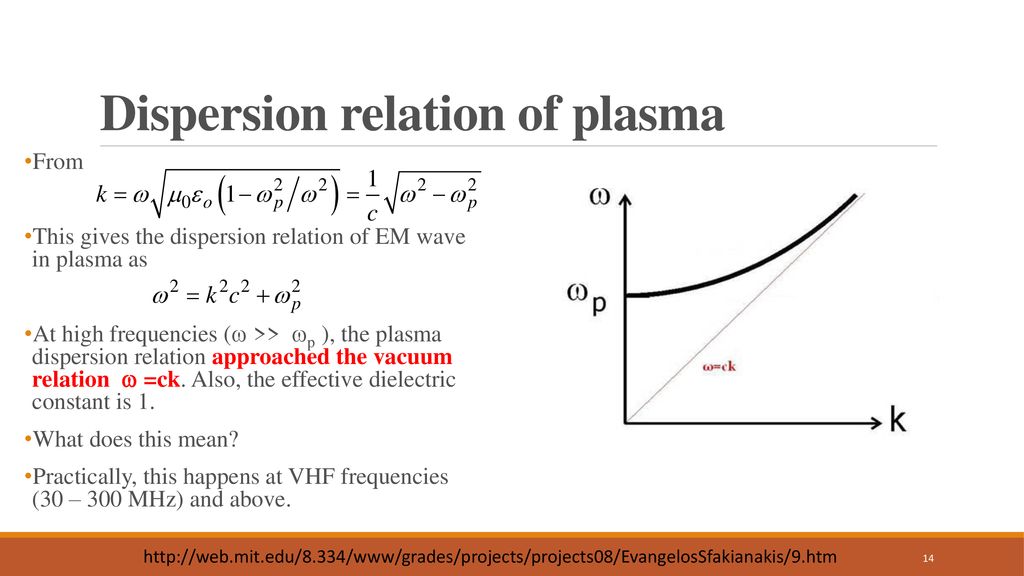
Electromagnetic waves in plasma - ppt download

PPT - PLASMA PHYSICS PowerPoint Presentation, free download - ID:1586804

Waves in Plasma Very short course. - ppt video online download
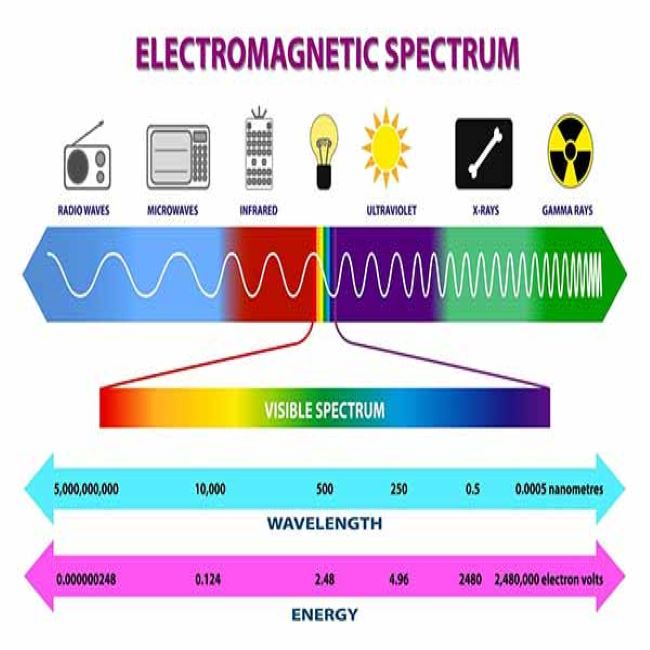
Grade 10 Electromagnetic waves in animated PowerPoint. • Teacha!

Sources and properties of EM waves

Electromagnetic Wave Propagation Guide

29 129 Plasma Oscillations, PDF, Ionosphere

Laser Plasma Accelerators

PLASMA PHYSICS AND ITS APPLICATION

